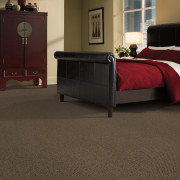Four Basic Fibers Used in Carpet: Polyester (PET) Carpet Fibers
Polyester is long-lasting, naturally stain resistant and incredibly affordable, which makes it a great option for any home. Out of the four basic fibers used in carpet, nylon gets the biggest rep for efficacy and durability. But PET (polyethylene terephthalate) polyester carpet fibers are every bit as capable and resilient as nylon and with a cheaper price tag to boot.
When it comes to shopping for carpet, more and more buyers are looking at polyester carpet fibers. PET polyester is engineered to impress, making for tougher carpets with more varied styles. But polyester carpet fibers are not only resilient, they make for excellent eco-friendly flooring. Made out of recycled materials, PET polyester carpet fibers can help you reduce your carbon footprint while keeping your home elegant and comfortable.
If you are concerned about polyester not being tough enough to make the cut, don’t sweat it. Thanks to many technological advances in yarn processing and carpet construction, PET polyester’s reputation as a high-performance fiber continues to grow. A well-constructed polyester carpet will be as resilient and perform just as well as nylon, while delivering exceptional softness and stunning color clarity.
Of course as with any carpet, keeping your carpet healthy requires some work. To get the most out of your polyester carpet, keep bleach and acid-based cleaning products at a safe distance. Also, polyester is super comfy and best-suited for low-traffic spaces, making it an excellent choice for bedrooms.
If you’re in the market for a new carpet remember, PET polyester carpet fibers offer exceptional stain and fade-resistance, and make for a really soft and budget-friendly option for any space in your home.
This post was written by Thais Sousa. Follow Thais on Google.

















Trackbacks & Pingbacks
[…] studies, PTT is shown to have a lower melting point than PET (similar carpet fiber), which means that the fibers are more easily damaged. However, PTT is more resistant to color loss […]
Comments are closed.